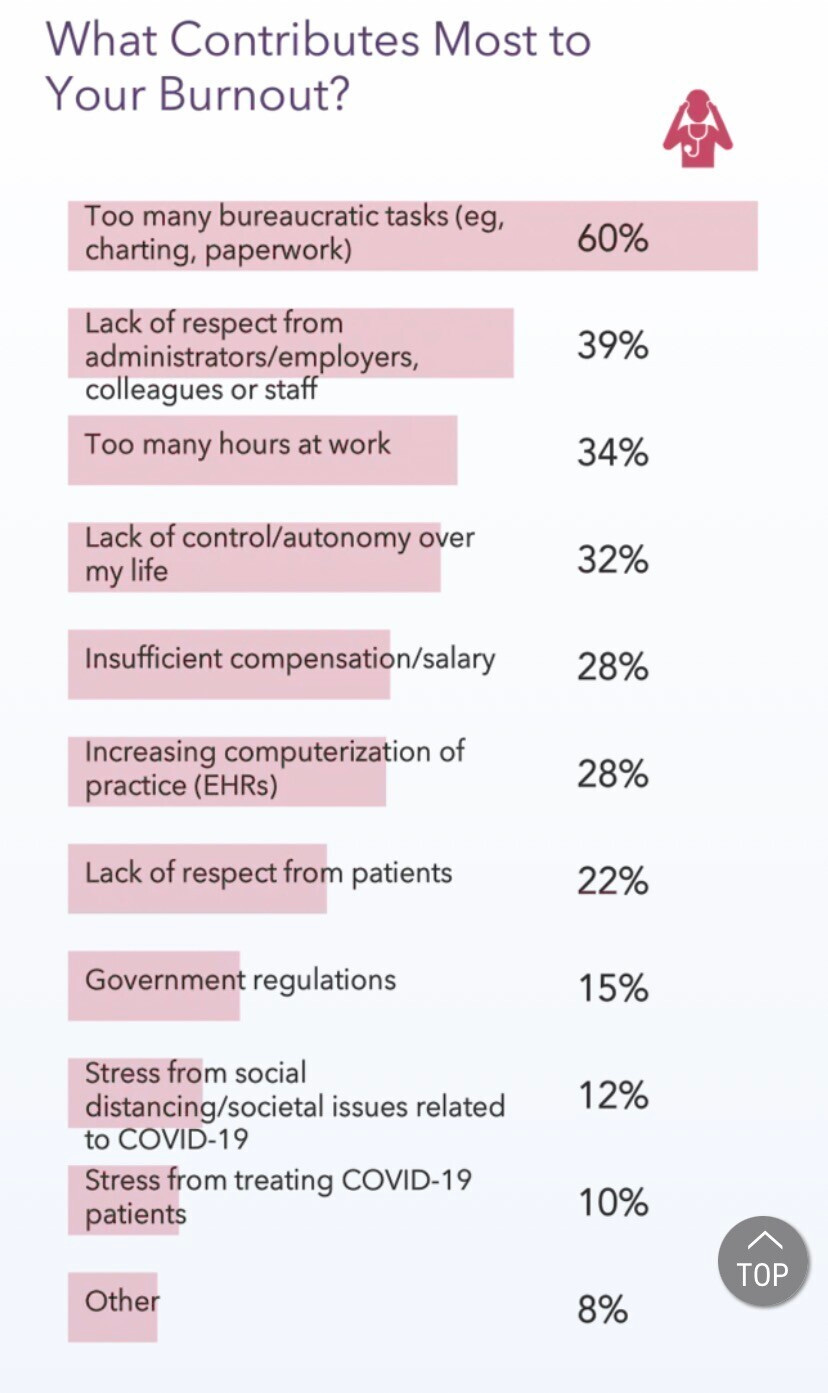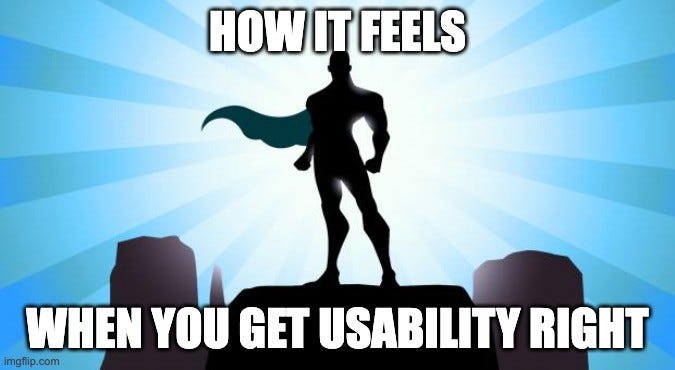Usability: HealthTech’s Final Problem
It was the best and worst day of my product management life.
I was shadowing physicians on rounds, monitoring patients at a DaVita Dialysis Center in Denver.
The patients were connected to a dialyser - a device that basically mimics kidney function. I was a couple of months into the Product Owner role. I jumped at the opportunity to see physicians eagerly using my software. My excitement quickly faded as I observed physicians not using any of the features I had shipped recently and hardly even using our application.
I was shattered.
This experience opened my eyes to the challenging relationship caregivers share with healthcare technology and forever changed my view on designing software.
You see, building technology needs empathy. You have to put yourself in the shoes of the person who will use your software. All theory fails, vicarious experience fails, and the only thing that survives is direct feedback from your actual user. This is why usability studies are considered the gold standard of software design. “Usability” means the ease and effectiveness with which users interact with a product to achieve their goals efficiently. It encompasses several factors: learnability, efficiency, memorability, error prevention and recovery, and user satisfaction. More on that later.
Physician's Dilemma
My Dad underwent surgery earlier this year. As is the case with surgeries, everyone in the family was anxious. Our surgeon was very knowledgeable and explained things with Feynman-level simplicity. We all understood exactly what was going to happen and what to expect. The surgeon had the patient experience so high on his list that he ensured my Dad rolled into that operation theatre with all questions fully answered. Getting access to such a surgeon itself is a blessing. Throughout the 3 days that I met him, I noticed that he came into the hospital early in the morning and worked through his routine, which was packed. He ensured that he did not drop a single one out of all the balls he was juggling.
But I did see him slip on something very important ….. for him.
His meals.
He had late lunches on 2 days and skipped lunch on one of the days. When I did see him interact with software, he looked frustrated for many reasons, sometimes because of poor internet connectivity, software glitches, and other times because he could not find the information he expected to see on a certain screen. He had to call for help and invest much time figuring things out. He even jokingly told me how "all these software have made his life difficult" and how he wished we could go back to paper.
PAPER!
That’s who your eternal competitor is, my fellow Product Managers.
Physicians are highly trained professionals with expertise in medicine, diagnosis, and patient care. Rapid integration of technology in healthcare has presented a significant challenge for them — the expectation to handle software systems adeptly. The reality is that physicians were never specifically trained to be software experts; their primary focus (rightly so) was always on providing the highest quality of patient care. Expecting physicians to seamlessly navigate complex software interfaces and workflows in addition to their primary responsibility is placing an undue burden on them. While usability plays a crucial role in software design, it is important to recognise the inherent challenges faced by physicians and provide them with intuitive, user-friendly tools that align with their medical training. By acknowledging and addressing this dilemma, health tech companies can empower physicians to focus on what they do best — delivering exceptional medical care.
I vividly remember asking a physician to give me feedback about designing one of the workflows I was building next.
He looked me straight in the eye and said, “Don’t make me do one more thing”.
The truth is that Physicians today rely heavily on software systems to manage patient data, access medical records, and streamline clinical workflows. However, when these software systems are poorly designed or overly complex, they can exacerbate the problem of physician burnout. And No, ChatGPT is not the solution.
The tangible downside of having complex interfaces goes beyond just the frustration. Complex software interfaces often require physicians to navigate multiple screens, input extensive data, or follow convoluted workflows. These added steps can consume valuable time, leading to increased administrative burden and reduced time for direct patient care. Physicians already face demanding workloads, and inefficient software designs only add to their stress and frustration. Complicated software interfaces can create a cognitive overload for physicians. Excessive information, non-intuitive layouts, and poor data visualisation can make it challenging to find critical patient details or interpret complex data. The resulting cognitive load can contribute to decision fatigue, impairing physicians' ability to make accurate and timely clinical decisions. Physicians have diverse preferences and practice styles, and rigid software interfaces that don't allow customisation can disrupt their established routines. This inflexibility can cause frustration, as physicians have to adapt their workflows to fit the software rather than the other way around. Physicians often interact with multiple software applications and systems in healthcare settings, each with its unique interface and navigation. This fragmentation creates a disjointed user experience, requiring physicians to switch between different systems and learn multiple interfaces. Introducing complex software systems without adequate training and onboarding can significantly impact physicians' ability to use them effectively.
The chair of the UCSF Dept of Medicine tweeted this in the backdrop of post-CoVID changes in healthcare tech ignoring usability. In addition, this research paper suggests that physicians working in the emergency department may end up clicking over 4000 times in a busy 10-hour shift.
Caregivers really want a way out, so much that they expect complex software to behave like consumer applications.
While this may not be an apples-to-apples comparison, technologists need to understand why this comparison is being made in the first place. Engaging physicians in software design can help create physician-friendly software systems. By reducing the cognitive burden and streamlining workflows, healthcare organisations can support physicians in delivering high-quality care while mitigating the risk of burnout. And while we focus on physicians right now, we must remember that they are one of the stakeholders in the entire healthcare ecosystem. Nurses are the most ignored stakeholder when designing healthcare technology, but that is for another day.
Right now, I want to focus on another critical stakeholder in this problem - The Patient.
Lost in the Labyrinth: The Impact of Usability (or the lack thereof) on Patient Experience
Patients often navigate a complex labyrinth of systems, technologies, and processes. The impact of Usability within this landscape can be profound. When patients encounter usability challenges, they become figuratively lost in the maze, facing hurdles that hinder their access to care, impede their understanding of medical information, and erode their healthcare experiences. The impact of Usability, or the lack thereof, reaches far beyond mere inconveniences—it can shape the very essence of a patient's journey, influencing their engagement, treatment adherence, emotional well-being, and, ultimately, their health outcomes.
When technologists prioritise Usability, they have the potential to empower patients.
How, you ask?
Clear interfaces, intuitive navigation, and well-organised content enable patients to find medical resources, schedule appointments, access test results, and communicate with healthcare providers more efficiently.
User-friendly patient portals, mobile applications, and wearable devices empower patients to track their health, manage chronic conditions, set goals, and communicate effectively with their care teams.
Simple instructions, medication reminders, and personalised interfaces can enhance patient understanding and compliance with prescribed regimens.
User-friendly interfaces that minimise stress and confusion contribute to a more positive patient experience, reducing anxiety and improving patient-provider interactions. Designing healthcare technology with inclusive Usability ensures that individuals with varying abilities, language preferences, or limited digital literacy can access and benefit from healthcare services equally. Having a laser focus on Usability ultimately enhances the overall patient experience in healthcare.
Usability is multi-dimensional
Folks working in tech are tuned to thinking about usability in a certain way. Product Managers generally focus on one or two dimensions when performing usability tests. But usability has several dimensions, many of which must be addressed while designing healthcare software.
Effectiveness refers to accuracy and completeness - how well a system supports accurate diagnosis or treatment.
Efficiency refers to the resources utilised - how quickly a patient can be diagnosed using a particular system or how much time a system saves healthcare professionals.
Learnability refers to how easy it is for users to learn to use the system.
Memorability refers to how easily users can remember how to use the system after a period of not using it.
Error Tolerance and Recovery refers to how well a system prevents user errors and how easily users can recover when errors occur.
Satisfaction refers to how well the system pleases or satisfies its users.
Accessibility refers to how usable a system is for people with a wide range of abilities, including those with disabilities.
Interoperability refers to the ability of your system to access, exchange, integrate and use data in a coordinated manner within and across organisational boundaries.
ChatGPT is one of the excellent recent examples of how to approach usability. AI, as we know it today, was not that accessible or even usable up until ChatGPT showed up. OpenAI has put effort into making ChatGPT's interface as user-friendly and accessible as possible. The simplicity that chatGPT's interface achieved by presenting users with a text input field where they can enter their questions or prompts is what took them from 0 to 100 Million in just 2 months! The goal to make the interaction feel natural, resembling a conversation with a knowledgeable assistant, was spot on. If you tally ChatGPT with the dimensions above, it checks many boxes.
Healthcare technology can similarly draw upon these dimensions. The relative importance of each dimension varies, though, depending on the specific context and users. The trick is to find your balance between these dimensions.
And if you don't, you pay the price.
The cost of poor usability
Poor usability can be significantly expensive for both businesses and users. Users can become frustrated when a product or system is difficult to use, leading to dissatisfaction and abandonment. Users may give up on completing tasks, seek alternative solutions, or switch to competing products that offer better usability. This can result in a loss of customer loyalty, decreased user engagement, and, ultimately, reduced revenue for businesses.
More tangibly, it can lead to
Increased Support and Training Costs: Users may need assistance understanding how to use the product, resolving errors, or finding the necessary information. Businesses may have to invest more resources in providing customer support, creating documentation, or conducting training sessions, which can strain budgets and impact operational efficiency.
Decreased Productivity and Efficiency: If tasks take longer to complete or involve excessive steps, users may experience reduced efficiency and be less productive. This can be particularly problematic in business settings where time is valuable and optimised workflows are crucial.
Reputational Damage: Negative user experiences can be shared through reviews, social media, and word-of-mouth, damaging the brand image and discouraging potential customers from engaging with the product. Rebuilding a tarnished reputation can be a challenging and costly endeavour.
Redesign and Rework Costs: If usability issues are discovered after a product has been launched, significant costs may be incurred in addressing those issues. Redesigning interfaces, redeveloping workflows, or modifying features to improve usability can require substantial resources and delay product updates or releases. The cost of retrofitting usability can be much higher than addressing usability concerns during the early stages of product development.
Alright, I hear you. You must be wondering.....
So, is there such a thing called “perfect Usability”?
Like all good Sherlock stories, this one has a twist too.
Perfect Usability is an illusion.
Users have varied backgrounds, abilities, and preferences. Designing a solution that perfectly accommodates every user's unique requirements and preferences is challenging. Usability requirements and expectations can change over time due to technological advancements, evolving user behaviours, and shifting industry standards. What may be considered perfect today may not meet future needs and expectations. More importantly, Usability is subjective, varying from person to person. What one user finds highly usable, another may not. Achieving perfect Usability for all users in every context is impossible due to this inherent subjectivity. Finally, there are trade-offs and constraints. Usability must be balanced with other factors, such as technical limitations, time constraints, cost considerations, and competing design priorities. Making trade-offs and compromises becomes necessary.
If perfect Usability is unattainable, why even worry about it in the first place?
While the concept of perfect Usability may not be real, the goal must be to strive for continuous improvement and iteration based on user feedback, research, and usability testing. Companies can come closer to delivering highly usable and user-centred software products by consistently refining and enhancing Usability through an iterative design process. This approach could potentially become your Superpower!
Here’s to unlocking a new era of innovation, exceptional care, and unparalleled user experiences!
********************************************************************************************
References







